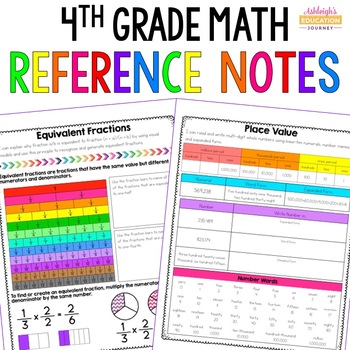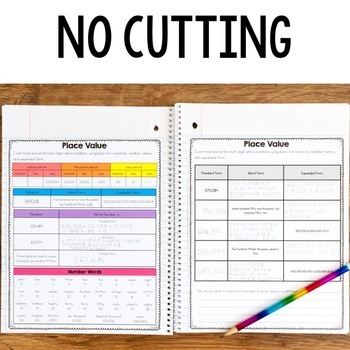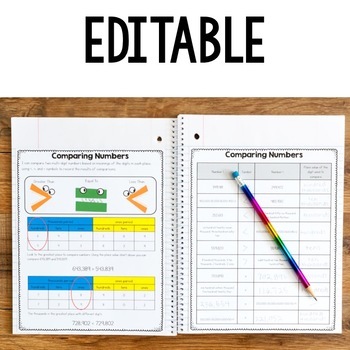4th Grade Math Reference Notes | Math Guided Notes
- Zip
- Google Apps™

What educators are saying
Description
These math guided notes are the perfect addition to any math classroom! There are two pages for every fourth grade math concept. Best of all-they require NO PREP and are editable!
These quick math guided notes contain a general overview or guide for all fourth grade math concepts. The entries and printables can be used as a stand alone resource or can supplement existing interactive notebooks and activities.
Use the first page for each concept as an introduction to new math skills. The first page consists of graphic organizers, models, examples, and/or definitions. The second page for each topic contains problems related to the reference page. These pages may be completed together for guided practice. These math reference notes or math guided notes are perfect for personal anchor charts.
To save you time, the there is no cutting required! If you need the pages to print smaller (to fit in a composition notebook), you can reduce the size when you print.
Students can refer to these reference pages throughout the year. They are perfect for students who were absent when a concept was introduced and make a great reference for parents.
What's Included?
-Multiplication as a Comparison
-Multiplication and Division Word Problems
-Multi Step Word Problems
-Factors and Multiples
-Patterns
-Value of Numbers
-Place Value and Forms of Numbers
-Comparing Numbers
-Rounding
-Adding With Regrouping
-Subtracting With Regrouping
-Multiplication
-Division (area model and partial product)
-Equivalent Fractions
-Comparing Fractions
-Adding and Subtracting Fractions
-Multiplying Fractions
-Mixed Numbers and Improper Fractions
-Fraction Multiples
-Decimals
-Units of Measure
-Perimeter and Area
-Line Plots
-Understanding Angles
-Measuring Angles
-Angles are Additive
-Types of Lines
-2 Dimensional Figures
-Symmetry
Check out these 4th Grade Math Units!
Guided Math Notes are available in other grade levels!





